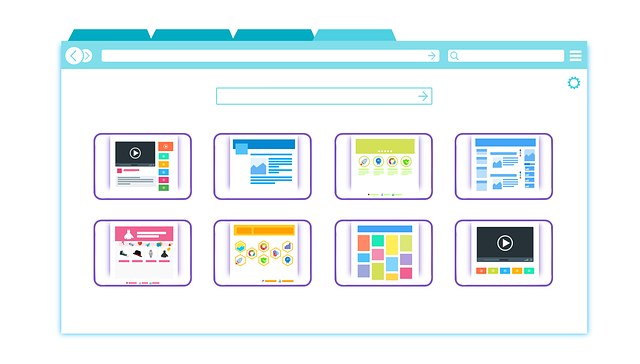Houston web designers leverage user behavior analysis to optimize digital interfaces, enhancing speed, navigation, and visual appeal. Strategic call-to-actions (CTAs), created through audience understanding and contrasting visuals, guide users to take specific actions like purchases or newsletter sign-ups. In the competitive market, effective CTAs boost conversions and business growth through data-driven optimization techniques, including A/B testing, that continuously refine website performance.
“Boost conversions with compelling Houston web design featuring clear calls to action (CTAs). This comprehensive guide explores user behavior insights to maximize engagement. Learn how effective CTAs, strategically placed within visually appealing designs, drive users towards desired actions. Discover optimization techniques through A/B testing and analytics to refine your Houston web design, ensuring a seamless user experience that translates into tangible results.”
- Understanding User Behavior: Unlocking Conversion Potential
- Crafting Effective Calls to Action (CTAs): Strategies for Impact
- Visual Design and Placement: Making CTAs Stand Out
- Testing and Optimization: Refining Your Houston Web Design for Conversions
Understanding User Behavior: Unlocking Conversion Potential

Understanding user behavior is a critical aspect of successful Houston web design, as it empowers designers to create websites that convert visitors into customers or leads. By studying how users interact with digital interfaces, web designers can identify pain points and optimize user journeys. For instance, knowing where users tend to click, how long they spend on each page, and the paths they take to make purchases can significantly influence the placement of calls-to-action (CTAs). Effective CTAs are strategically placed to capture attention and guide users towards desired actions, such as subscribing to a newsletter or making an online purchase.
This behavioral understanding allows Houston web designers to craft more engaging experiences. They can enhance page load speeds, simplify navigation, and create visually appealing layouts that resonate with the target audience. By aligning website design with user expectations and behaviors, businesses can unlock their conversion potential, leading to increased sales, improved user satisfaction, and a stronger online presence.
Crafting Effective Calls to Action (CTAs): Strategies for Impact

Crafting compelling calls to action (CTAs) is a vital aspect of successful Houston web design. Effective CTAs guide visitors to take specific actions, whether it’s making a purchase, signing up for a newsletter, or downloading an e-book. To create impactful CTAs, start by understanding your target audience’s needs and pain points. Use clear and concise language that resonates with them; avoid jargon or overly complex phrases. A well-designed CTA should be visually distinct, often using contrasting colors or buttons with compelling text to draw attention.
Positioning is key; place CTAs strategically throughout the website, aligning them with user flow and natural pause points. Test different call-to-action wording and formats—such as “Shop Now,” “Learn More,” or “Sign Up”—to see what converts best for your audience. Additionally, create a sense of urgency by incorporating time-sensitive elements like limited-time offers or stock notifications to encourage immediate action. Remember, an effective CTA is not just about aesthetics but also functionality, ensuring seamless user experiences that drive conversions and foster positive engagement on Houston web design projects.
Visual Design and Placement: Making CTAs Stand Out

In the competitive landscape of Houston web design, creating visually appealing websites with strategic call-to-actions (CTAs) can significantly drive conversions and boost business growth. Visual design plays a pivotal role in ensuring your CTAs stand out amidst the abundance of information on a webpage. Utilize contrasting colors, bold fonts, or unique shapes to capture users’ attention and guide them towards the desired action. Placement is equally crucial; positioning CTAs above the fold, near content breakdowns, or within strategic whitespace can increase their visibility and effectiveness.
By integrating these design elements, Houston web designers can craft engaging user experiences that nudge visitors towards conversions. Well-designed CTAs not only attract attention but also communicate the value proposition clearly, making it easier for users to understand what action is expected of them. This precision in visual communication enhances user engagement and ultimately contributes to higher conversion rates.
Testing and Optimization: Refining Your Houston Web Design for Conversions

Effective Houston web design goes beyond aesthetics; it’s a strategic process that involves continuous testing and optimization to drive conversions. A/B testing, for instance, allows comparing two versions of a webpage to determine which performs better in terms of user engagement and conversion rates. By analyzing metrics such as click-through rates, bounce rates, and time on page, you gain valuable insights into what resonates with your audience.
This data-driven approach enables you to refine your Houston web design iteratively. You might discover that a specific call-to-action (CTA) button placed in a different position or with altered wording significantly increases conversions. Regularly updating and optimizing your website based on these findings ensures it remains not just visually appealing but also highly effective in guiding visitors towards desired actions, ultimately boosting business growth.
In the competitive landscape of Houston web design, maximizing conversions is key to business success. By understanding user behavior, crafting compelling calls-to-action (CTAs), optimizing visual design and placement, and continually testing and refining your strategies, you can create a website that drives real results. Implement these effective practices to elevate your Houston web design and watch your conversion rates soar.
